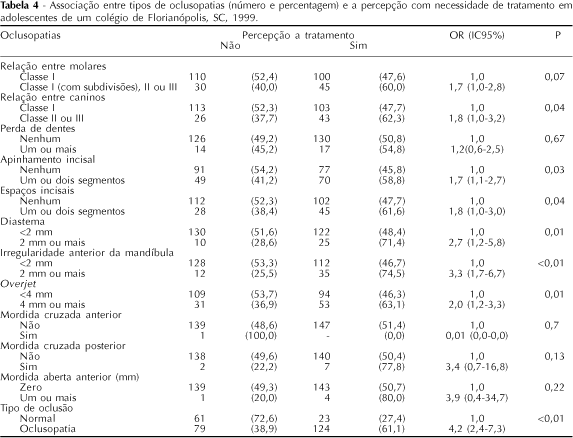OBJECTIVE: To evaluate the impact of objectively defined orthodontic needs (normative criteria) on the external aspect and mastigation's satisfaction, and to compare these needs to self-perceived ones (subjective criteria) among adolescents. METHODS: A cross-sectional study was carried out among all 315 students aged 14-18 years who attended a highschool in Florianópolis, Brazil. A single dentist collected clinical data about malocclusion (Dental Aesthetic Index) and a questionnaire was applied to assess perceived aesthetic and masticatory satisfaction and need for orthodontic treatment. Data analysis included frequency distribution calculation and multiple logistic regression modeling. RESULTS: There were high participation of 95% (n=300) and intra-examiner agreement (Kappa 0.6-1.0). The prevalence of one form of malocclusion was 71.3%. Crowding in one or two incisal segments [OR=2.8 (1.6-4.9)] and overjet [OR=2,4 (1.4-4.3)] were risk factors associated with perceived aesthetic dissatisfaction. Adolescents who had anterior mandibular irregularity [OR=3.3 (1.6-6.9)], overjet [OR=1.7 (1.1-3.0)] and anterior diastema [OR=3.1 (1.4-6.9)] revealed the highest self-perceived need for orthodontic treatment. CONCLUSIONS: There are different degrees of objectively defined occlusal problems acceptable in the population which interfere with their decision to seek treatment and have a direct impact on the need of care. Subjective measures should be incorporated to clinical criteria currently used.
Malocclusion; Perception; Cross-sectional studies; Malocclusion; Prevalence; Orthodontics





